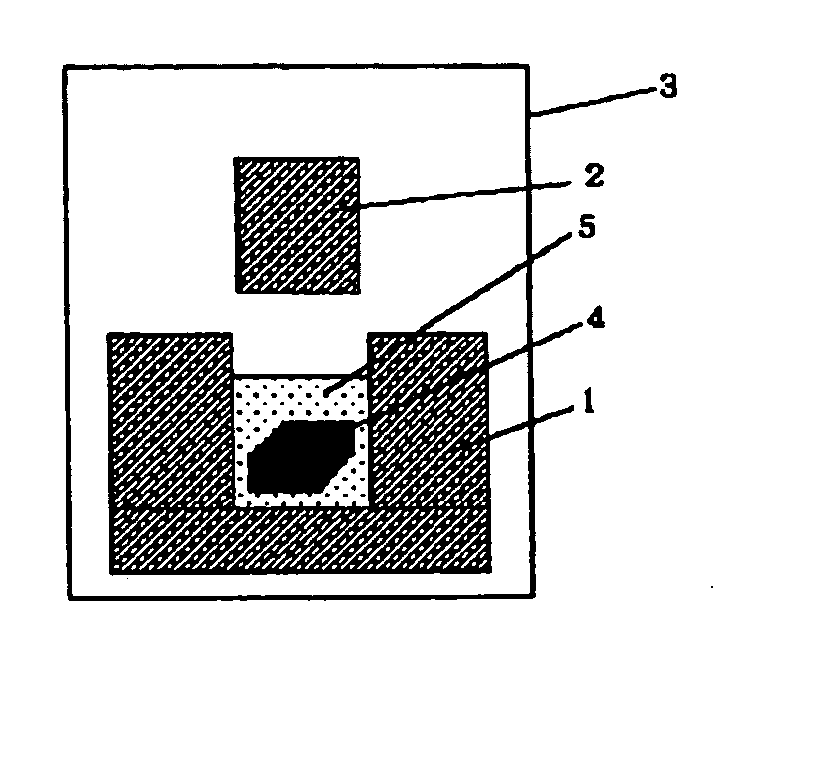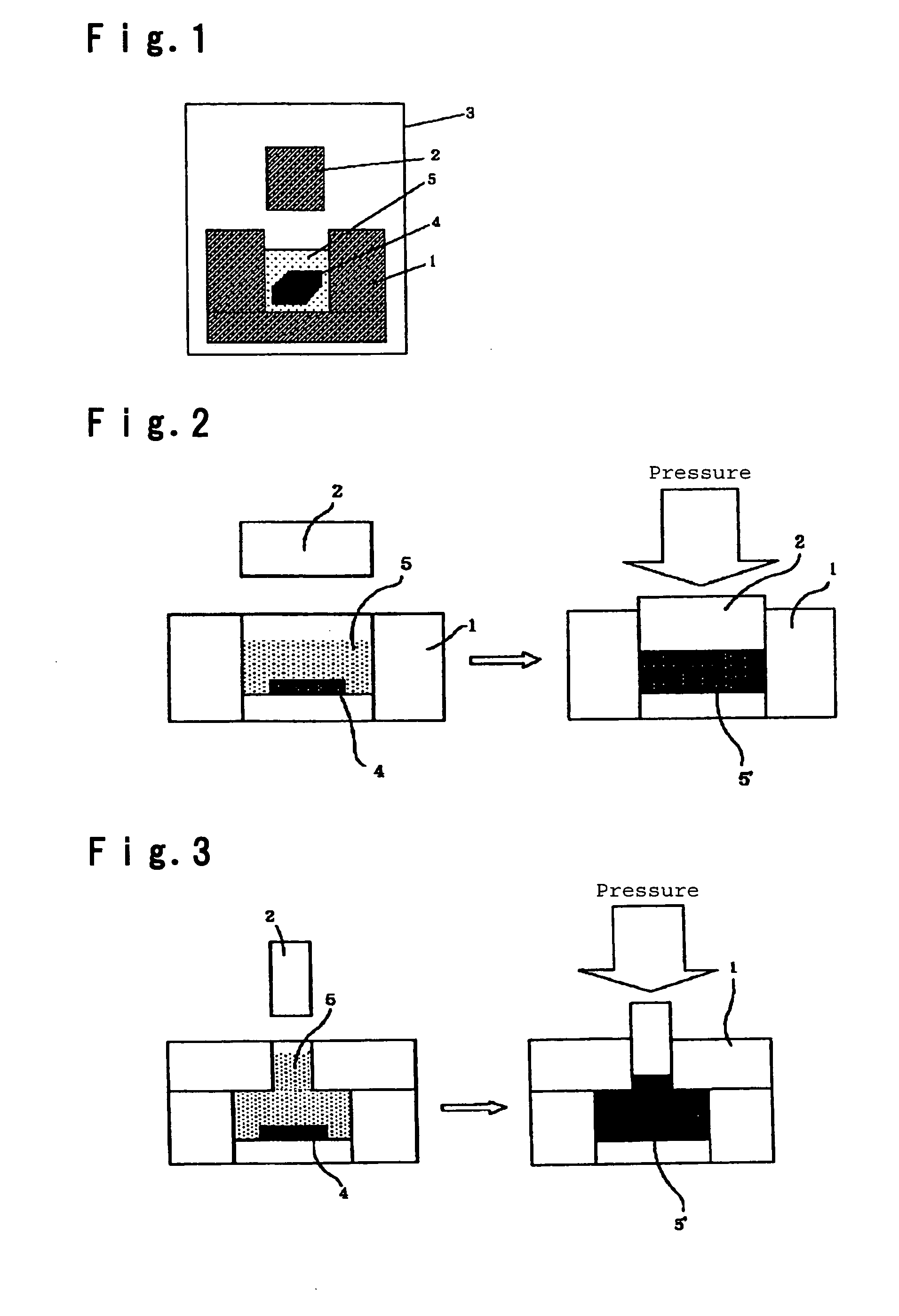Fine Carbon Fiber-Metal Composite Material and Method for Production Thereof
a technology of carbon fiber and metal composite material, applied in the field of fine carbon fiber/metal composite material, can solve the problems of large thermal expansion coefficient in nature, difficult processing, and substrate comprising silicon and aluminum alloy, and achieve the effects of reducing thermal stress, reducing thermal stress, and small elastic modulus of the substra
- Summary
- Abstract
- Description
- Claims
- Application Information
AI Technical Summary
Benefits of technology
Problems solved by technology
Method used
Image
Examples
example 1
[0055] A mixture of fibers comprising 100 parts by weight of fine carbon fibers having a fiber diameter of 150 nm, a fiber length of 4.5 μm and an aspect ratio of 30, obtained by treating vapor grown carbon fibers in an argon atmosphere at a temperature of 2,800° C. for 30 minutes, covered with 15 parts by weight of a phenolic resin, 20 parts by weight of a pure aluminum powder (average particle size: 20 μm) and 3 parts by weight of a phenolic resin powder (trade name: LA-100P, manufactured by LIGNYTE CO., LTD.) was cured and molded under conditions at 150° C. for 30 minutes by using a uniaxial molding machine under a pressure of 200 Kg / M2 to produce a plate-shaped molded product (length: 100 mm, width: 100 mm, thickness: 15 mm).
[0056] Here, the above fine carbon fibers were prepared as follows. 20 Parts by weight of bisphenol A (solubility in water at room temperature: 0.036), 365 parts by weight of phenol, 547 parts by weight of 37 wt % formalin and 7.7 parts by weight of triethy...
PUM
| Property | Measurement | Unit |
|---|---|---|
| length | aaaaa | aaaaa |
| diameter | aaaaa | aaaaa |
| volume fraction | aaaaa | aaaaa |
Abstract
Description
Claims
Application Information
 Login to View More
Login to View More - R&D
- Intellectual Property
- Life Sciences
- Materials
- Tech Scout
- Unparalleled Data Quality
- Higher Quality Content
- 60% Fewer Hallucinations
Browse by: Latest US Patents, China's latest patents, Technical Efficacy Thesaurus, Application Domain, Technology Topic, Popular Technical Reports.
© 2025 PatSnap. All rights reserved.Legal|Privacy policy|Modern Slavery Act Transparency Statement|Sitemap|About US| Contact US: help@patsnap.com


